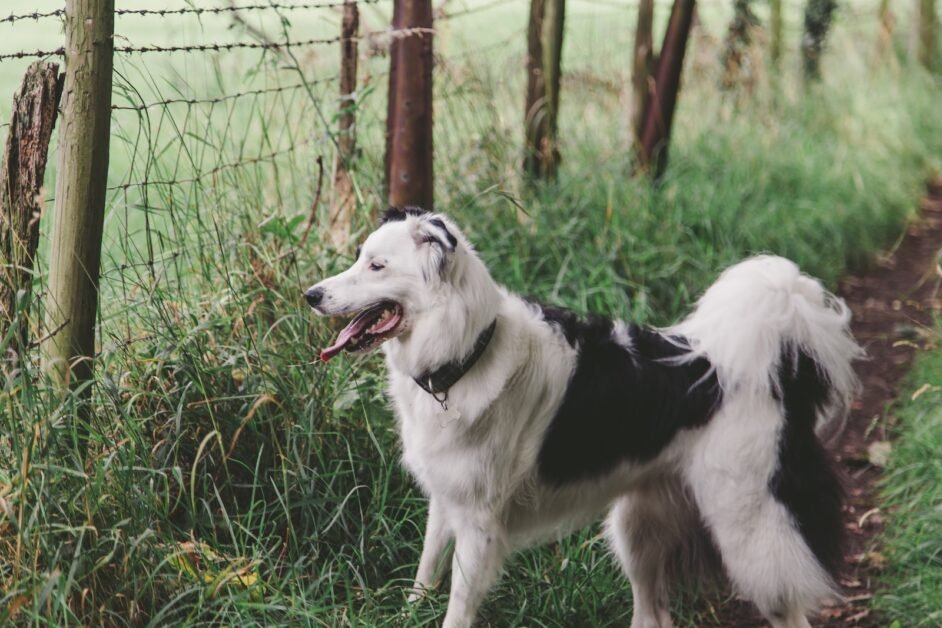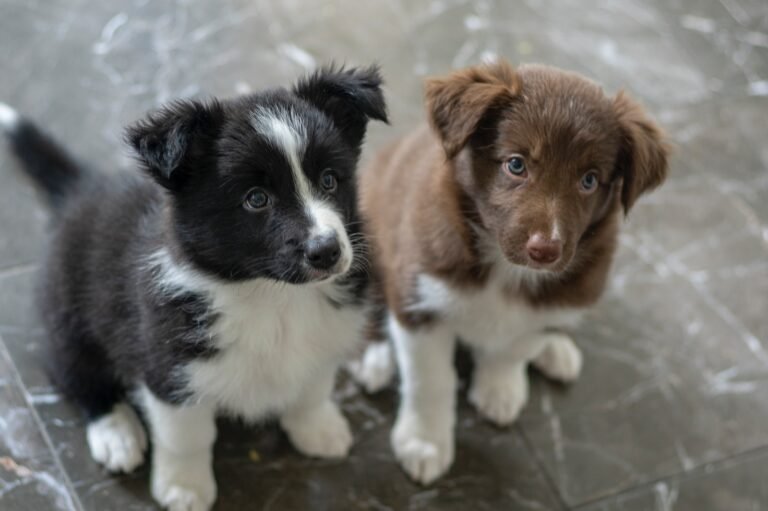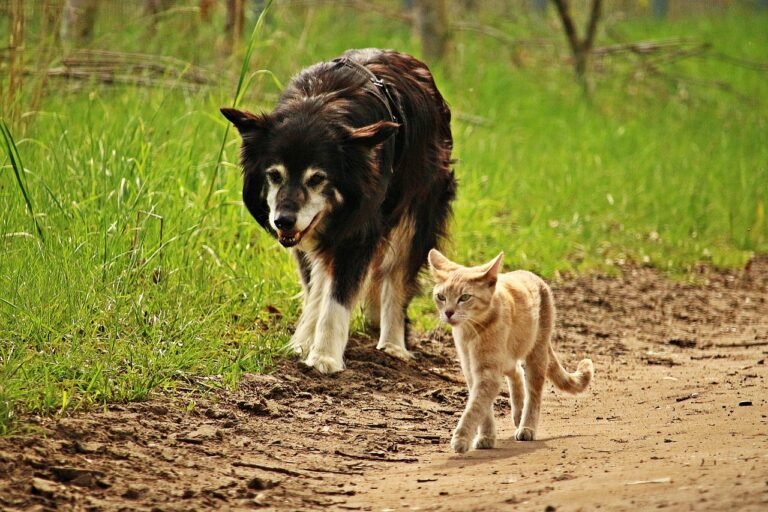How Much Space Does a Border Collie Need? The Complete 12-Step Guide To A Healthy Dog
How Much Space Does a Border Collie Need? The Complete 12-Step Guide
Providing sufficient indoor and outdoor space for an energetic breed like the Border Collie is an important consideration before committing. But exactly how much room does this active herding dog require to live happily? Follow this 12-step guide covering ideal housing, yard size, space considerations, and more to ensure your canine companion has the area they need.
While their exercise, training, and bonding needs take priority, allocating reasonable living space allows your Border Collie’s energies to flow in a healthy way. Review these housing recommendations through the lens of your unique situation to make the best space for both human and dog to thrive.
How much space does a Border Collie need? First Estimate Your Border Collie’s Energy Level
When gauging how much space does a Border Collie need and your appropriate home and yard sizes, first consider your individual dog’s temperament and activity needs. While Border Collies are certainly energetic as a breed, some have far more intensity than others.
Border Collies from working lines with jobs or who compete in athletics generally need larger spaces to feel fulfilled. More laid-back pets from show lines often adapt fine to smaller dwellings. Try to assess your Border Collie’s personal exercise requirements and destructive tendencies when left idle. Higher energy dogs naturally need more room to move safely.
If you have not yet added a Border Collie to your home, research breed lines thoroughly and communicate with breeders about whether a higher or lower drive dog best suits your lifestyle. Matching space to each dog’s energy level sets everyone up for success.
Remember Exercise Comes First!
More important than living space alone is providing your Border Collie with adequate rigorous daily exercise, mental stimulation, and training. A Border Collie in a small home or apartment but getting 2 hours of hard exercise daily can be better off than a bored dog left idle in a mansion. So ow much space does a Border Collie need depends on many factors.
Prioritize meeting exercise needs through leashed training, off-leash running, games and puzzles. A small space is fine when paired with sufficient activity. While room to move helps, the majority of a Border Collie’s needs center around using their body and mind vigorously. Don’t let space be an excuse to skip their all-important workout!
How much space does a Border Collie need? Provide Designated Dog Zones To Help
Even smaller dwellings should aim to include designated canine zones for your Border Collie’s bed, crate, toys, and food. This helps dogs feel secure and prevents accidents or destruction from stress. Possible dog spaces include:
- Crates for safe resting
- Gated off laundry room or bathroom
- A corner of the kitchen or hallway
- Under desk or other “den” areas
- Back hallways or open closet space
Allowing your Border Collie to retreat to “their” area provides a comfortable safe zone when home alone or needing rest. Ensure it fits bedding, water, and enrichment essentials. Defining their place reduces stress.
Can Border Collies Live in Apartments?
Border Collies can adapt to apartment living with the right committed owner. But their high exercise needs make apartments far from ideal for this active breed. Close quarters often exacerbate stress, barking, accidents, and separation anxiety.
Success in apartments relies heavily on providing daily aerobic exercise through long, brisk walks, jogging, cycling, swimming and/or dog sports. Access to areas for safe off-leash running is also very helpful. Providing doggy daycare and training classes prevents boredom.
While possible, apartments require extra effort and diligence from owners. Expect noise complaints without adequate outlets. Apartments with access to trails or without shared walls work best. Border Collies do best with at least moderate outdoor space.
Adding a Border Collie to a Small Home
If your current home is under 1000 square feet, adding a Border Collie can work if you are committed to providing:
- Opportunity for vigorous outdoor exercise and mental stimulation daily
- Access to fenced areas for safe off-leash playtime
-Regular socialization walks and training classes
- Rotating puzzle toys to prevent boredom
- Crate training and confinement when you are away
- Soundproofing or bark deterrents to muffle noise
How much space does a Border Collie need in a small home? With creativity and diligence to meet their needs for activity, a small home is certainly workable. But also be realistic about whether you can achieve the required time commitment. Avoid excessive crating. Small homes succeed with the right owner.
How much space does a Border Collie need? Best Housing Arrangement for Border Collies
While adaptable when their other needs are met, Border Collies do best in homes with:
- Safely fenced back yards to play, run, and relieve themselves
- 1000+ square feet for comfortable lounging and owner bonding space
- Rooms with windows providing fresh air and interesting views
- Non-slip flooring for traction when moving quickly
- Access to nearby walking/running trails
- Nearby neighbors tolerant of some barking
Moderate indoor footage combined with safe outdoor access allows a Border Collie ample room to play and move freely. Their living environment impacts quality of life, so provide reasonably spacious and stimulating abodes.
How much space does a Border Collie need? Here’s Optimal Yard Size for Border Collies
Border Collies ideally require at least a small, securely fenced yard to call their own. Yard sizes under .10 acre can work, but .25 acre or more is better. Key needs include:
- Fencing sunk in the ground and at least 5 feet high made of wood, brick, or chain link. Border Collies are escape artists!
- Turf or pea gravel rather than rough pavements
- Areas offering both sunlight and shade
- Interactive toys and multiple water stations
- Room for running at top speed and playing fetch
While exercise shouldn’t happen solely in the yard, safe outdoor spaces provide important freedom. Look for the largest, most secure yard possible when choosing Border Collie living spaces.
How much space does a Border Collie need? Country Living Is Perfect!
Border Collies can thrive in rural country settings or farms providing:
- Over an acre of securely fenced land
- Livestock like chickens or sheep they can assist with
- Safe ponds, streams or pools for swimming
- Dirt trails and fields to explore
- Outbuildings or barns offering additional shelter
The ability to sprint freely and have jobs to do in a spacious country setting taps into their heritage. A rural smallholding or hobby farm makes an ideal situation if properly fenced and supervised.
How Much Space Does a Border Collie Need In Multi-Dog Home Considerations?
If adding another canine companion, the space needs of multiple dogs must be considered. It’s optimal to have:
- 100+ square feet of indoor space per adult dog
- Double the yard space – .25+ acre for two dogs
- Multiple water/feeding stations
- Individual crates and beds
- Room to incorporate interactive toys and play areas
While they enjoy company, Border Collies can be possessive of toys and territory. Having adequate room minimizes conflicts yet allows cohabitating companionably. Adding dogs always merits living space reevaluation.
Puppy Space Requirements
When bringing home a Border Collie puppy, it’s essential to properly puppy-proof your dwelling. Have designated puppy zones for sleeping, playing, eating. Useful tips include:
- Set up an exercise pen with toys for safe play
- Use baby gates to block access to some areas
- Keep doors closed to high-risk rooms like kitchens
- Remove rugs and loose items that can be pulled down
- Keep trash and household chemicals secured
- Crate train to encourage good confinement habits
Allocating reasonable yet controlled spaces helps set puppies up for success until trained. Restrict access until potty trained and less destructive. Slowly allow safe access to more areas as they mature.
How Much Space Does a Border Collie Need for Elderly Dogs
As Border Collies age, make adjustments promoting mobility and comfort including:
- Provide thick orthopedic bedding in their favorite sleeping areas
- Fit stair gates if they have trouble with steps
- Ensure water bowls are raised and easy to reach
- Put down rugs for traction on slick floors
- Move their food station closer to their potty area
Adapting their living space for an aging Border Collie’s limited mobility and needs allows you to keep them comfortably at home longer. Monitor their ability to navigate their existing environment and adjust as needed.
How Much Space Does a Border Collie Need For Travel and Overnight Stays?
While Border Collies bond closely with their family home turf, they can also enjoy travel when needs are met. Useful travel tips include:
- Bring along their bedding, dishes, favorite toys
- Reserve pet-friendly lodging with adequate indoor play space
- Scope out parks and trails at destinations in advance
- Bring a crate for safe sleeping quarters and downtime
- Stop for periodic exercise sessions to burn energy
With preparation for their needs, most Border Collies can happily accompany your family on vacations and overnight visits. Some may experience car sickness – consult your vet for remedies. Planning helps dogs feel at home away from home.
Frequently Asked Questions About How Much Space Does a Border Collie Need
Determining appropriate housing for your intelligent herding dog requires considering their unique needs. Below are answers to some common questions:
How much living space should a Border Collie have?
Ideally 1000+ square feet indoors, along with a securely fenced yard exceeding .25 acre. But diligent owners can make smaller spaces work by providing the priority needs – lots of exercise and training. Access to outdoor play areas is very helpful.
Is it ok to leave my Border Collie outside during the day?
Border Collies should not be left alone unattended for long periods. They desire companionship and can escape, bark excessively, or injure themselves if left to self-entertain. Ensure they get attention and enrichment. If outside, provide a sheltered area they can voluntarily enter and exit.
Can I use an invisible fence for my Border Collie?
Invisible fences are risky with Border Collies. Their high drive to chase or herd can lead them to barrel through the mild shock. And invisible systems leave dogs vulnerable to wildlife or loose dogs entering the property. Physical fences sunk in the ground are strongly recommended.
Where should my Border Collie sleep at night?
Many Border Collies wish to sleep in their owner’s bedroom, whether crated or in a dog bed. Allowing them to sleep close by prevents separation stress at night. If crating, place the crate in your bedroom so they don’t feel isolated.
How do I prepare my house for a Border Collie puppy?
Puppy proof thoroughly by removing loose objects, securing doors, keeping garbage and chemicals out of reach, setting up exercise pens or gated areas for safe play, and designating a potty training zone. Limit access until house trained. Offer toys for chewing and mental stimulation.
Can I travel overnight with my Border Collie?
With preparation, Border Collies can adapt to travel and overnight stays well. Bring familiar items like their bed, dishes, and toys. Reserve pet-friendly lodging with plenty of play space. Scope out walking routes beforehand. Crate train them so they have a familiar sleeping quarters anywhere.
The Takeaway: Prioritize Your Border Collie’s Needs
While environment does impact a Border Collie’s quality of life, the real keys are providing abundant exercise, training, companionship, and playtime. If their primary physical, mental, and social needs are met daily, these adaptable dogs can be perfectly happy in any reasonably sized dwelling.
Still, attending to appropriate space considerations enhances their comfort and reduces problem behaviors. Focus first on fully tiring them out through activity and engagement. Then offer the largest possible indoor quarters and outdoor secured yard area within your means. With your commitment to fulfill their needs, Border Collies can thrive in spaces of all sizes when cared for properly!








